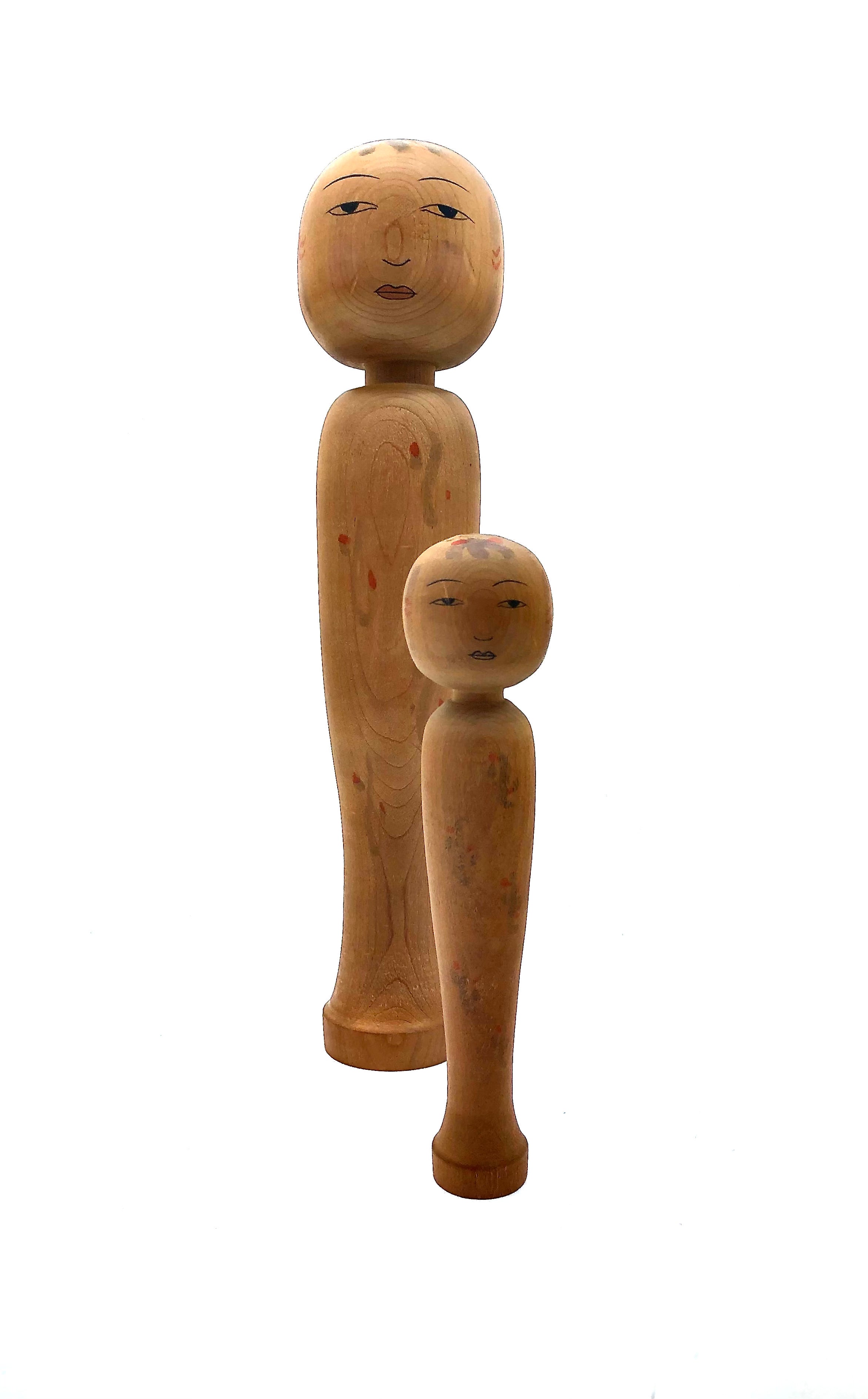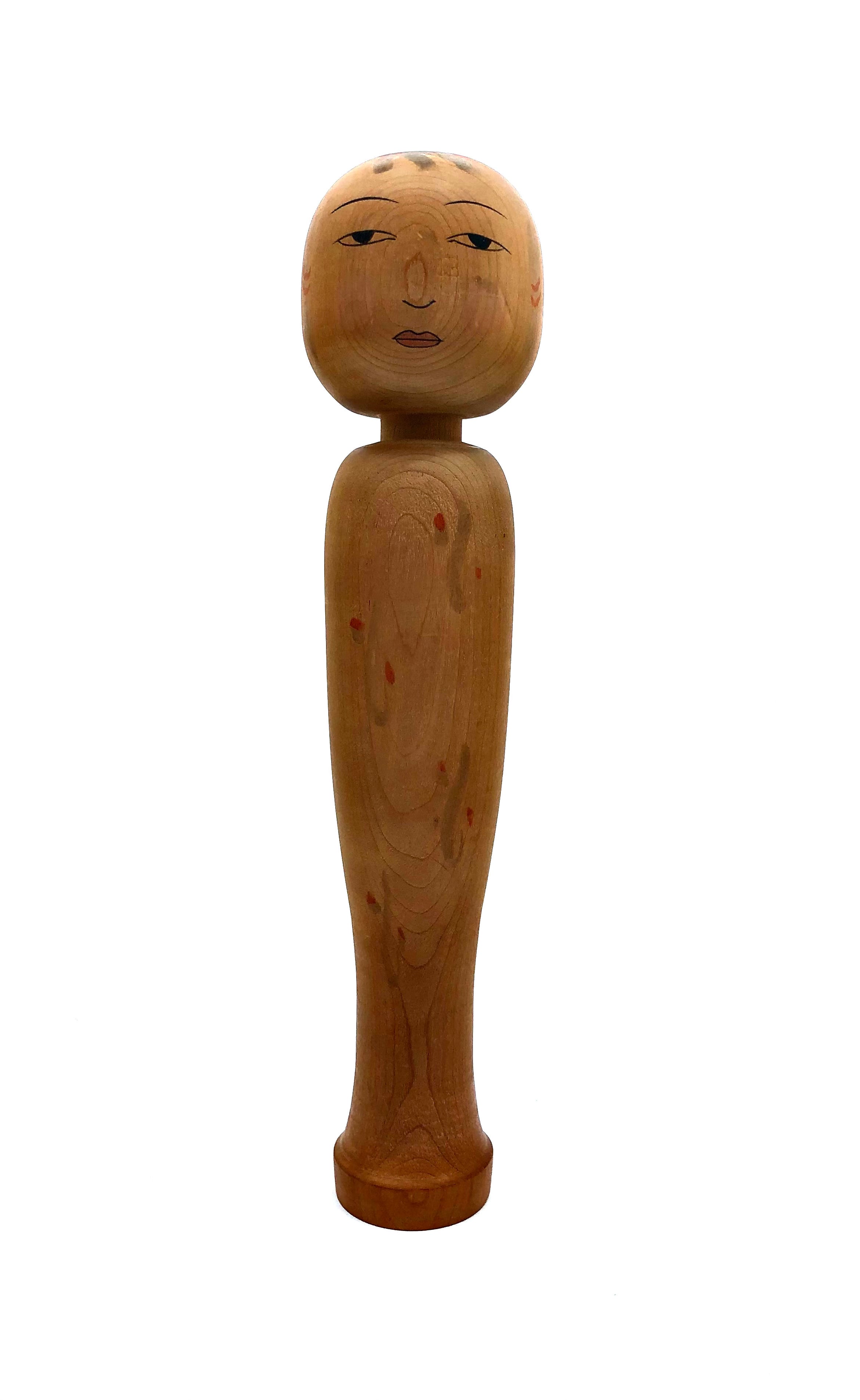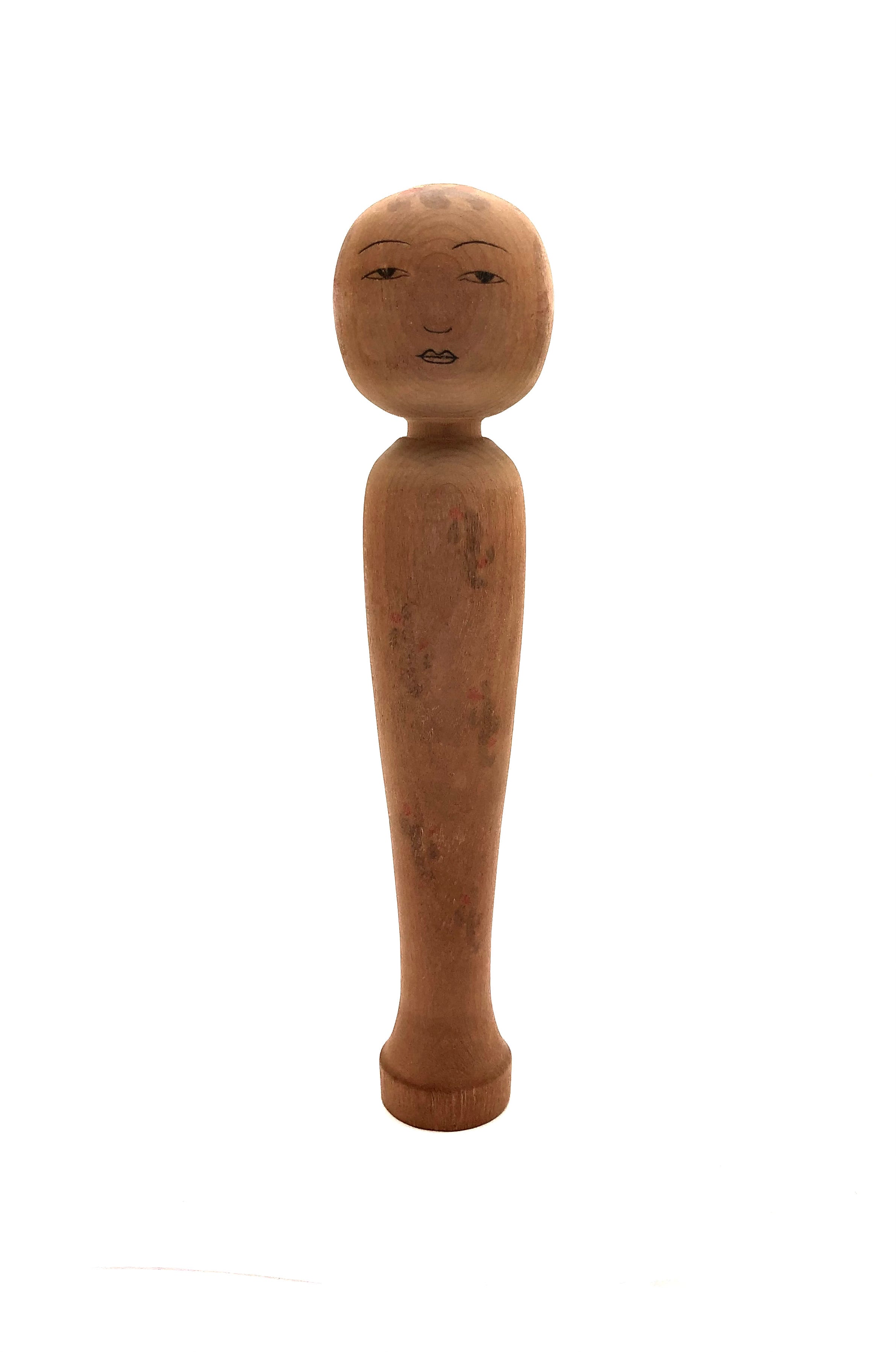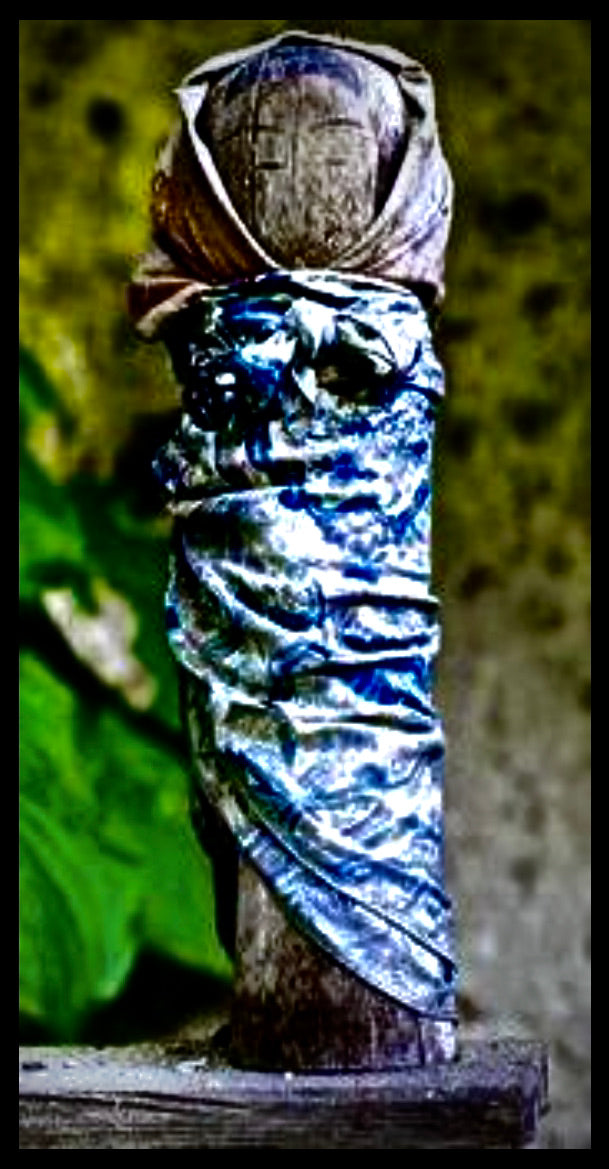



Antique RARE Japanese “Pre-Kindai” Kokeshi from Aomori Prefecture
Dimensions: 14-1/2”h; 8-1/2”h
In spite of the popularity of Traditional and Sosaku Kokeshi today, there is no definite answer to the origin of Kokeshi, which were thought to have been conceived by farmers and lumbermen, who were making wooden dolls made from left-over scraps of wood. This type of doll is referred to as Pre-Kokeshi, so to speak, and created for religious purposes, and before Kokeshi wood craftsmen, (Kijishi) developed the doll into collectible children’s toys.
In the region, (Aomori) and where these pieces were created, such figures were used in conjunction with folk religion during this period, in which people worshiped a God called “Oshirasama”. Oshirasama dolls during this period were both hand-carved or lathe-turned from a piece of wood about a foot long with hand-painted human faces and simulated hair drawn on a simple head. In some instances, they were covered with a piece of cloth and worshipped in many homes as a God that protects their houses from evil (see image #4). This doll is grayer in overall coloration, with little ornamentation on the figure. When a motif is incorporated, as shown here, the drawings are quite simple and understated. This doll-form later developed into what we now know as Kokeshi, which were first made a little more than 100 years ago.
These two “Pre-Kindai kokeshi” dolls being offered represent a Mother and Child; are lathe-turned from one solid piece of wood; and consist of only two parts — a spherical head with small eyes (Futae-Mabuta), a nose, (Neko-Bana), and an expressive mouth, with suggested bangs and side hair fringes, suspended by a neck on a slender, undulating, lathe-turned body. The ornamentation used on the body is minimal and unidentified. Additionally, in some villages, these dolls were used as a protector of the home and agriculture and in this case were made by a farmer/doll carver, and not identified with any of the Traditional family types.
The simple facial drawings are identified as Suiboku-ga, later called Sumi-e, Japanese black ink painting used to create some of many of the first folk art pieces such as handmade wooden dolls, and used in this case to draw both doll’s facial features. Ink from this period was called Bokuju, a liquid carbon black ink, introduced in 1898. Bokuju was mixed soot from burnt pinewood and water which is why the face details on these two dolls remain very clear and unfaded. Plant-based ink was used for the body decoration on both dolls and has deteriorated over time.
The pair show the natural, minimally-ornamented wood grain to bring out the simplistic design, wood tone, shape, and simplicity. The facial features were made before the craft was called Kokeshi, and before they became a collector's item for the Japanese general public or tourists, and prior to the craft being promoted by the Japanese craftwork industry. The pieces are unsigned for the maker was not necessary to be identified, for they were made for the family, and at the time signing was not in fashion.
Condition: Very good condition and commensurate with age showing a few shallow scars and fading of the motifs incorporated into the body of each piece. None of which detract from the beauty of the dolls.
NOTE: A tutelary, (protector or guardian) of the home (ie no kami) found throughout Japan's northeastern region is referred to as Oshirabotoke ("the Oshira Buddha"). Although Oshirasama is also commonly viewed as a tutelary of agriculture. little agreement has been reached regarding the etymology of the name Oshira and the Kami's specific characteristics. The object of Oshirasama design generally consists of a 12” long piece of wood, with minimally detailed faces carved or painted in black ink. The figure is then clothed in layers of cloth called Osendaku which are added to, each year. Many old families for which women play the central role, enshrine Oshirasama on a Kamidana, or in the alcove of a main room. Some say these were the predecessors of a doll later identified as Kokeshi and which served a very different function, (child’s toy).
